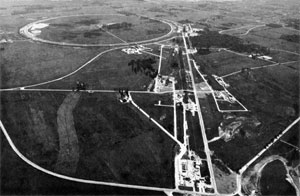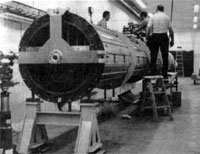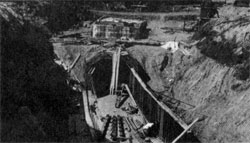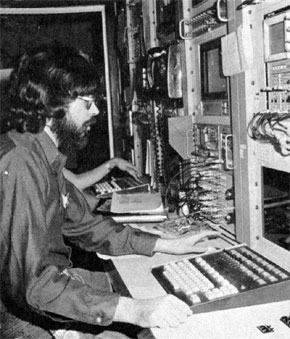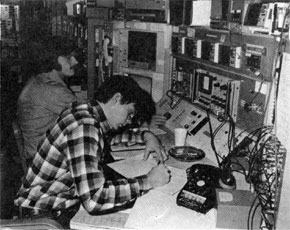Fifth Anniversary: Recalling December 1, 1968...and the Interim...December, 1973
On December 1, 1968, a hardy group of 1,000 people tramped through a blinding snowstorm to the corner of the Arthur Schimelphenig farm, on the border of Illinois' Kane and DuPage counties near Batavia, to see the first spade of earth turned in the construction of the National Accelerator Laboratory. Five years later, in December 1973, the institution those people envisioned that winter day is a reality. The world's largest proton accelerator is almost complete and is being used by hundreds of experimenters from around the world in their search for the secrets buried in the heart of the atom.
The prairies, where long ago Indians hunted and more recently homesteaders staked out fertile fields, are now witnessing a new era in man's search for knowledge of the universe in which he lives. Those who have used these lands before have been followed by the staff and associates of the National Accelerator Laboratory, using the most advanced technology in the world to explore the inner structure of all matter, for the benefit of the generations yet to come.
Linear Accelerator
The linear accelerator was the first NAL component to be started, the first to be finished. Since December, 1970, the linac has been providing protons for the first stage of acceleration of the NAL beam.
The Booster Accelerator
In December, 1970, the last Booster magnet was installed in the completed tunnel begun in 1969. Staff members continue to improve performance of the Booster.
Since May, 1971, the Booster Accelerator has taken 200 million electron volt protons from the Linac and "boosted" their energy to 8 billion electron volts. They are then injected into the Main Accelerator. The Booster synchrotron is about 500 feet in diameter. Twelve "bunches" of Booster protons are required to fill the Main Accelerator.
Main Ring
Construction of the four-mile concrete circle comprising the tunnel of the NAL Main Accelerator provided many unique challenges. The Main Ring reached its design energy of 200 billion electron volts on March 1, 1972, now operates routinely at 300 BeV.
Striking architectual features such as the arch of the Meson Detector Building, the twin towers of the Central Laboratory Building, and the geodesic pop can dome, set the pace for the forward-looking, creative research to be done at the National Accelerator Laboratory. The Laboratory practices serious conservation on its site, maintaining a herd of buffalo and encouraging a variety of wildlife.
Since 1968, NAL has actively pursued programs of equal employment opportunity, seeking the achievement of its scientific goals within a framework of equal opportunity and of a deep dedication to the fundamental tenets of human rights and dignity.




